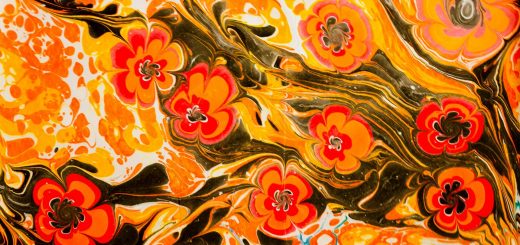Gods of the Sun Across Ancient Civilizations

Hey there, amazing readers! 🖐️ Just a quick note: yes, we know there are a lot of ads here. Trust us, we get it—it’s not the prettiest look, but they help us keep this blog alive and kicking. Those pesky little ads cover the costs of all the behind-the-scenes magic, from hosting and tech stuff to creating content we hope you’ll love.
We’re committed to delivering quality posts, and your support (even just sticking around despite the ads) means everything to us. So, bear with us, and thanks for helping us keep the good vibes rolling. Now, on to the fun stuff! 😉
TRANSLATE BUTTON AT THE END OF THE ARTICLE
A Quick Overview
Sun gods have illuminated the beliefs and practices of ancient civilizations across the globe.
These radiant deities symbolized life, light, and energy, holding a crucial place in mythology.
They were not merely figures of worship; they represented the very essence of existence.
As we journey through ancient cultures, we will discover how these sun gods influenced societies, agricultural practices, and even festivals.
Exploring the Radiant Deities of Ancient Sun Worship
Sun worship has been a fundamental aspect of human culture for millennia.
The sun, with its life-giving properties, was revered as a deity in various forms.
Each civilization painted its sun god with different hues, reflecting their environment, societal needs, and spiritual beliefs.
In ancient Egypt, the sun was seen as a creator and sustainer.
The Egyptians recognized the sun’s cyclical journey, symbolizing rebirth and renewal.
Similarly, cultures in the Americas and Asia regarded their sun gods as central to their cosmologies.
With the rise of agriculture, the connection between the sun and crop growth became undeniable.
Many societies developed rituals and festivals to honor their solar deities, aiming to ensure a bountiful harvest.
Even today, the legacy of these sun gods persists.
Many modern practices and holidays can trace their roots back to ancient sun worship.
Exploring these deities reveals not just their significance but also how they shaped human history and culture.
The Importance of Sun Gods in Human History and Culture
Sun gods were more than just mythological figures; they were essential to understanding the universe.
These deities provided explanations for natural phenomena and instilled a sense of order in the chaos of existence.
Throughout history, civilizations cultivated their beliefs around these gods.
For instance, the Egyptians depicted the daily journey of the sun as a metaphor for life and death.
They believed that the sun god Ra sailed across the sky during the day and navigated through the underworld at night, symbolizing the cycle of life.
In many cultures, sun gods were associated with fertility and abundance.
They were called upon to bless the land, ensuring that the crops would flourish.
Agriculture was deeply intertwined with the sun; it dictated planting and harvesting seasons.
The rituals devoted to sun gods often involved elaborate ceremonies, sacrifices, and festivals.
These events fostered community bonding and a shared sense of purpose, reinforcing social structures and cultural identity.
Moreover, sun gods acted as symbols of hope and resilience.
In times of hardship, communities would pray to these deities for guidance and strength.
This spiritual connection provided comfort and a sense of belonging.
In essence, sun gods were pivotal in shaping the worldviews of ancient civilizations.
They embodied the relationship between humanity and nature, influencing everything from agriculture to social order.
Ra: The Majestic Egyptian God of the Sun
Ra, the awe-inspiring sun god of ancient Egypt, was one of the most significant deities in the Egyptian pantheon.
Depicted with a falcon head adorned with a sun disk, Ra symbolized the sun’s power and dominance.
His presence was essential to the Egyptians, providing warmth and life.
Egyptians believed Ra embarked on a daily journey across the sky in his solar boat, the Barque of Millions of Years.
Each dawn heralded his rebirth, while sunset represented his descent into the underworld.
This cycle personified the eternal nature of life and death.
Ra’s influence was profound.
He was often associated with pharaohs, who were considered his living embodiments on Earth.
The pharaohs built temples and monuments to honor him, ensuring the sun god’s favor and protection.
Interestingly, Ra was also linked to several other deities.
For instance, he merged with Amun, becoming Amun-Ra, during the New Kingdom period.
This combination reflected the merging of different aspects of divinity and highlighted the complexity of Egyptian beliefs.
Festivals dedicated to Ra were grand and vibrant, celebrating the sun’s life-giving power.
During these festivities, people offered prayers, food, and even music to honor their beloved sun god.
In times of drought or famine, the people would turn to Ra, beseeching him for mercy and rain.
His role as a chief deity underscored his importance in both daily life and spiritual practices.
Even today, Ra’s legacy endures, reminding us of the Egyptians’ deep connection to the sun and its essential role in their culture.
Inti: The Glorious Sun God of the Inca Empire
Inti, the sun god of the Inca Empire, was revered as the father of the Inca people.
Represented as a golden figure radiating light, Inti symbolized warmth, growth, and prosperity.
The Incas viewed him as a benevolent god, who provided sunlight necessary for agriculture.
The Incas believed their civilization was chosen by Inti.
They constructed grand temples, such as the Temple of the Sun in Cusco, to honor him.
These structures were marvels of engineering, designed to align with the sun’s movements, showcasing the Incas’ deep understanding of astronomy.
Inti was also associated with the agricultural calendar.
The Incas celebrated Inti Raymi, a festival marking the winter solstice.
This vibrant celebration involved music, dance, and offerings to ensure a bountiful harvest in the coming year.
The Inca society was built around communal values, and Inti represented these ideals.
He was not just a distant god; he was a part of every Inca’s life.
During planting and harvesting seasons, they would offer prayers and sacrifices to gain his favor.
In addition to agricultural significance, Inti played a role in the Inca’s social structure.
The Sapa Inca, the emperor, was considered Inti’s descendant, reinforcing the divine right to rule.
This connection between the sun god and leadership solidified Inti’s importance in governance.
Inti’s legacy continues to influence Peruvian culture today.
Many modern peoples still celebrate their connection to this ancient sun god, keeping his spirit alive in festivals and traditions.
Helios: The Greek Personification of the Sun
In ancient Greece, Helios represented the sun itself.
He was often depicted as a radiant figure driving a chariot across the sky, illuminating the world below.
Helios embodied the sun’s daily journey, from dawn until dusk, symbolizing the passage of time.
Helios was not just a passive observer; he had an active role in the lives of mortals.
In myth, he witnessed and reported the deeds of humans to the gods, often serving as a source of divine judgment.
This connection emphasized the belief that the sun was an all-seeing entity, watching over humanity.
While Helios was worshipped, he was not as prominent as other Greek gods like Apollo.
However, he held a significant place in various myths and stories.
For example, in the famous tale of Phaethon, Helios’s son attempted to drive the sun chariot but lost control, leading to disastrous consequences.
This myth underscored the importance of respecting divine power.
Festivals honoring Helios were celebrated, particularly in Rhodes, where he was revered as a protector of sailors and the island.
The Colossus of Rhodes, one of the Seven Wonders of the Ancient World, was dedicated to him, showcasing the city’s admiration for the sun god.
Helios’s legacy persisted beyond ancient Greece.
As the sun became a symbol of enlightenment and knowledge, Helios’s image transformed, influencing later philosophies and artistic representations.
Even today, the fascination with solar imagery can be traced back to deities like Helios.
In essence, Helios represented the sun’s power and presence in Greek mythology.
His stories and symbols echoed the importance of light and its connection to human life.
Surya: The Vibrant Sun God in Hindu Mythology
In Hindu mythology, Surya is the radiant sun god, symbolizing health, wealth, and prosperity.
Often depicted riding a chariot drawn by seven horses, he represents the seven days of the week.
Surya is not only a deity but also a source of knowledge and enlightenment.
Surya holds a vital role in Hindu rituals and practices.
Many Hindus begin their day with Surya Namaskar, a sequence of yoga poses performed to honor the sun.
This practice reflects the reverence for Surya as a life-giving energy source.
In Vedic texts, Surya is often invoked for healing and protection.
His rays are considered purifying, driving away darkness and negativity.
This connection between light and healing is integral to many Ayurvedic practices.
Surya is also a central figure in numerous myths.
One famous story involves his marriage to the goddess Samjna, who had trouble with his intense brightness.
This myth illustrates the balance between beauty and brightness, a theme prevalent in many Hindu tales.
Festivals dedicated to Surya, such as Makar Sankranti, celebrate the harvest and the sun’s return after winter.
Participants engage in joyful rituals, showcasing their gratitude for the sun’s life-giving energy.
Interestingly, Surya has a unique position in Hindu cosmology.
He is often worshiped as a form of Vishnu, further emphasizing his importance within the broader Hindu belief system.
Surya’s presence is felt in temples across India, where devotees seek blessings for health and prosperity.
Surya’s legacy lives on, reminding us of the sun’s significance in our lives.
His stories and rituals continue to inspire millions, connecting humanity with the rhythms of nature.
Tonatiuh: The Aztec Sun God and Cosmic Warrior
Tonatiuh, the Aztec sun god, was a fierce and powerful deity.
He represented the sun’s strength and was often depicted with a fiery appearance.
The Aztecs believed that Tonatiuh demanded sacrifices to sustain his power, emphasizing the importance of life and renewal.
In Aztec cosmology, the sun was seen as a warrior that fought for survival.
Each day, Tonatiuh battled the forces of darkness, symbolizing the struggle for life amidst chaos.
This narrative resonated deeply within Aztec culture, highlighting the importance of sacrifice.
The Aztecs organized elaborate ceremonies to honor Tonatiuh, often involving human sacrifices.
These rites were seen as necessary offerings to ensure the sun’s continued journey across the sky.
The dedication to Tonatiuh underscored the belief that the sun was essential for life.
Tonatiuh’s significance extended beyond agriculture; he was also associated with warfare.
As a cosmic warrior, he symbolized strength, bravery, and the relentless pursuit of victory.
Aztec warriors invoked his name before battles, seeking his favor and protection.
The connection between Tonatiuh and the Earth was profound.
The Aztecs believed that the sun’s rays nurtured crops, ensuring bountiful harvests.
Festivals celebrated the harvest and honored Tonatiuh’s role in sustaining life.
Today, Tonatiuh’s influence can be seen in modern Mexican culture.
Elements of Aztec mythology continue to inspire art, literature, and celebrations, keeping alive the spirit of this powerful sun god.
Amaterasu: The Shining Sun Goddess of Japan
Amaterasu, the goddess of the sun in Japanese mythology, is one of the principal deities in Shinto.
She is often depicted as a beautiful woman radiating light, symbolizing purity and fertility.
Amaterasu’s presence is integral to Japanese culture and spirituality.
According to myth, Amaterasu emerged from a cave, bringing light back to the world after a period of darkness.
This act of emergence signifies hope and renewal, embodying the essence of the sun.
Her story emphasizes the cyclical nature of light and life.
Amaterasu is linked to the imperial family of Japan, believed to be her direct descendants.
This connection highlights her importance in Japanese identity and governance.
The emperor is regarded as the earthly representative of the sun goddess, reinforcing the divine right to rule.
Festivals celebrating Amaterasu, such as the Grand Festival of the Sun, involve rituals and offerings at shrines.
These events reflect gratitude and reverence for her life-giving energy, showcasing the deep-rooted connection between the goddess and the Japanese people.
Amaterasu’s influence extends into art and literature, where she is celebrated as a symbol of light and beauty.
Many contemporary Japanese practices still honor her legacy, highlighting the enduring nature of her worship.
Her story resonates with themes of resilience and hope, reminding us that even in times of darkness, light will return.
Amaterasu embodies the harmony between humanity and the natural world.
Huitzilopochtli: The Aztec God of the Sun and War
Huitzilopochtli, the Aztec god of the sun and war, was a formidable figure in the Aztec pantheon.
Depicted as a warrior with hummingbird feathers, he represented the sun’s power and its connection to conflict and sacrifice.
Huitzilopochtli played a crucial role in Aztec mythology, guiding the people to their promised land.
The Mexica tribe believed in his divine protection during their migration, symbolizing hope and determination.
In Aztec culture, Huitzilopochtli demanded regular sacrifices to gain strength.
This belief illustrated the connection between the sun’s energy and the sustenance of life.
The grand temples in Tenochtitlan were dedicated to him, showcasing the importance of sun worship.
Festivals honoring Huitzilopochtli were vibrant and filled with rituals.
The most significant was the festival of Huitzilopochtli, where communities came together to celebrate with music, dance, and offerings.
These events strengthened bonds and reaffirmed cultural identity.
Interestingly, Huitzilopochtli was also associated with the harvest.
The Aztecs believed that successful battles and bountiful crops were tied to his favor.
This duality of war and agriculture underscored the complexities of life in Aztec society.
Huitzilopochtli’s legacy continues to inspire modern interpretations of Aztec culture.
His influence can be seen in art, literature, and celebrations, reflecting the enduring spirit of this powerful deity.
Apollo: The Multifaceted Greek God of the Sun
Apollo, the Greek god of the sun, is a multifaceted figure in mythology.
He embodies various aspects, including music, art, prophecy, and healing.
Represented as a young man with a radiant crown, Apollo symbolizes enlightenment and creativity.
Apollo was often associated with the sun’s light, illuminating both the physical and intellectual realms.
His journey across the sky represented the passage of time and the enlightenment of humanity.
This connection made him a central figure in Greek culture.
The Greeks celebrated Apollo with numerous festivals, such as the Pythian Games, highlighting his role as a patron of arts and competition.
These events fostered community spirit and creativity, showcasing the deep respect for Apollo’s influence.
In addition to his artistic aspects, Apollo served as a protector of health.
He was often invoked for healing and protection, emphasizing the connection between the sun’s light and well-being.
Many healing temples dedicated to Apollo flourished across ancient Greece.
Apollo’s connection to prophecy was another significant aspect of his identity.
The Oracle of Delphi, dedicated to him, served as a central site for divination.
People traveled great distances to seek guidance from Apollo, believing in his wisdom and foresight.
Even today, Apollo’s legacy persists in modern culture.
His influence can be seen in literature, art, and music, reminding us of the timeless connection between creativity, light, and knowledge.
The Role of Sun Gods in Ancient Agricultural Societies
Sun gods held a central role in ancient agricultural societies.
The sun was viewed as the ultimate source of life, and communities relied on it for successful harvests.
This relationship between the sun and agriculture shaped cultural practices and societal structures.
In many civilizations, the sun’s cycles dictated planting and harvesting times.
Communities developed calendars based on solar movements, ensuring they aligned agricultural activities with the sun’s energy.
This synchronization was crucial for survival.
Rituals and ceremonies dedicated to sun gods were common across cultures.
These events aimed to honor the gods and secure their blessings for bountiful crops.
Offerings, prayers, and festivals became integral to community life, reinforcing social bonds.
Interestingly, the sun’s influence extended beyond agriculture.
Many societies viewed the sun as a symbol of prosperity and abundance.
The success of crops often determined trade and economic stability, linking the sun’s favor with societal growth.
The importance of sun gods is evident in the myths surrounding them.
Stories often reflect humanity’s relationship with nature and the dependence on solar energy for sustenance.
Through these narratives, cultures expressed gratitude and reverence for their deities.
Even today, the legacy of sun worship endures in agricultural practices.
Many farming communities continue to celebrate seasonal cycles, honoring the sun’s role in nurturing life.
This connection to ancient practices emphasizes the lasting impact of sun gods on human culture.
Celebrating Sun Gods: Festivals and Rituals Through Time
Throughout history, festivals dedicated to sun gods have been vibrant celebrations of life, community, and gratitude.
These rituals reflect humanity’s deep-seated connection to the sun and its role in sustaining life.
Across cultures, festivals often coincided with the solstices and equinoxes, marking significant changes in the agricultural calendar.
For instance, the summer solstice was a time of celebration, as communities expressed thanks for the sun’s warmth and light.
In ancient Egypt, the Wepet-Renpet festival celebrated the new year, coinciding with the rise of the Nile and the sun’s return.
This event involved feasting, music, and rituals, fostering a sense of communal unity.
Similarly, in the Inca Empire, the Inti Raymi festival honored Inti, the sun god.
This vibrant celebration involved elaborate ceremonies, dance, and offerings, showcasing the community’s gratitude for the sun’s life-giving energy.
In Japan, the Grand Festival of the Sun celebrated Amaterasu, marking the importance of light and purity.
Participants engaged in rituals and offerings at shrines, reinforcing their connection to the divine.
Even in modern times, remnants of these ancient celebrations persist.
Many cultures continue to honor seasonal changes and the sun’s role in agriculture, reflecting the enduring significance of sun worship.
Overall, these festivals serve as a reminder of humanity’s shared connection to the sun.
They celebrate not only the deity but also the community’s bond with nature and each other.
Conclusion
The gods of the sun across ancient civilizations offer us a unique glimpse into humanity’s longstanding relationship with the sun.
From Ra in Egypt to Surya in India, and Helios in Greece to Inti in the Inca Empire, these deities symbolize life, light, and energy.
Their stories illustrate how societies have revered the sun as a necessary force for survival, shaping agricultural practices, social structures, and cultural identities.
Festivals and rituals dedicated to these sun gods highlight the importance of gratitude and community.
They remind us that even in our modern world, the sun continues to influence our lives.
As we celebrate the legacy of these ancient deities, we connect with our shared history, embracing the warmth and light that the sun provides.

The Enlightenment Journey is a remarkable collection of writings authored by a distinguished group of experts in the fields of spirituality, new age, and esoteric knowledge.
This anthology features a diverse assembly of well-experienced authors who bring their profound insights and credible perspectives to the forefront.
Each contributor possesses a wealth of knowledge and wisdom, making them authorities in their respective domains.
Together, they offer readers a transformative journey into the realms of spiritual growth, self-discovery, and esoteric enlightenment.
The Enlightenment Journey is a testament to the collective expertise of these luminaries, providing readers with a rich tapestry of ideas and information to illuminate their spiritual path.
Our Diverse Expertise 🌟
While our primary focus is on spirituality and esotericism, we are equally passionate about exploring a wide range of other topics and niches 🌍📚. Our experienced team is dedicated to delivering high-quality, informative content across various subjects ✨.
To ensure we provide the most accurate and valuable insights, we collaborate with trusted experts in their respective domains 🧑🏫👩🏫. This allows us to offer well-rounded perspectives and knowledge to our readers.
Our blog originally focused on spirituality and metaphysics, but we’ve since expanded to cover a wide range of niches. Don’t worry—we continue to publish a lot of articles on spirituality! Frequently visit our blog to explore our diverse content and stay tuned for more insightful reads.







